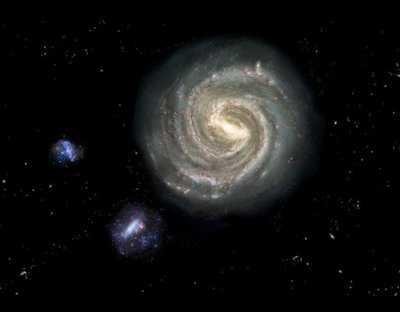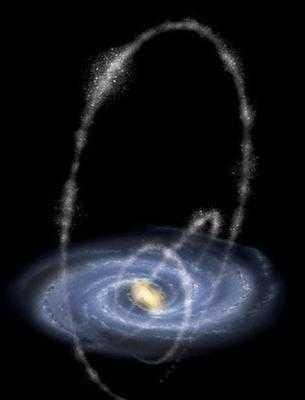The planets are surrounded by satellites, stars are surrounded by planets, and there are also a group of celestial bodies around the galaxy.
Galaxies are cosmic giants, but galaxies vary in size. The largest galaxy, IC 1101, can hold thousands of galaxies (about 150,000 light-years in diameter), but the Milky Way can hold thousands of smaller dwarf galaxies, which are often thought to be the basis for the formation of large galaxies.
When it comes to dwarf galaxies, many friends don't know much about them. Usually dwarf galaxies refer to smaller, darker galaxies, so they're not easy to find, but they're huge in number. Many dwarf galaxies have been found just around our Milky Way, and many are orbiting the Milky Way. Just like the moon around the earth, they are galactic satellite galaxies.
For example, we often hear of the Large Magellanic Galaxy and the Small Magellanic Nebula. They are two dwarf galaxies, very close to the Milky Way, the nearest galactic objects to the Milky Way. They are easily seen in the Southern Hemisphere, just over 100,000 light-years away from the solar system, just like planets. Satellites revolve around the galaxy. The Big Magellanic Nebula is 160,000 light-years away from Earth, about one-twentieth the diameter of the Milky Way, and the Magellanic Nebula is 190,000 light-years away, only a few percent the size of the Milky Way.

Astronomers initially thought they orbit the Milky Way once every 1.5 billion years, but recent research suggests they may have first come near the Milky Way, but under the galaxy's strong gravitational pull, they can no longer leave, where stars and gases have changed under the gravitational pull of the Milky Way. Astronomical observations have found that the Magellanic Cloud has now been torn apart, and that its stars will become part of the Milky Way in the future, and that the Big Magellanic will eventually be the same fate.
There are so many dwarf galaxies like this in the universe. Our Milky Way is located in the local cluster of galaxies. There are about 20 large galaxies in this cluster, but there are more dwarf galaxies. Most of these dwarf galaxies revolve around large galaxies, some even around two or more large galaxies. Like stars and planets in a multi-star system, planets are affected by the gravity of multiple stars and move irregularly. Only dwarf galaxies close to large galaxies usually orbit a galaxy.

@zengman, I gave you a vote!
If you follow me, I will also follow you in return!
Enjoy some !popcorn courtesy of @nextgencrypto!
Very informative, you must be an astronomer. My tip to you is to use tags that are trending.